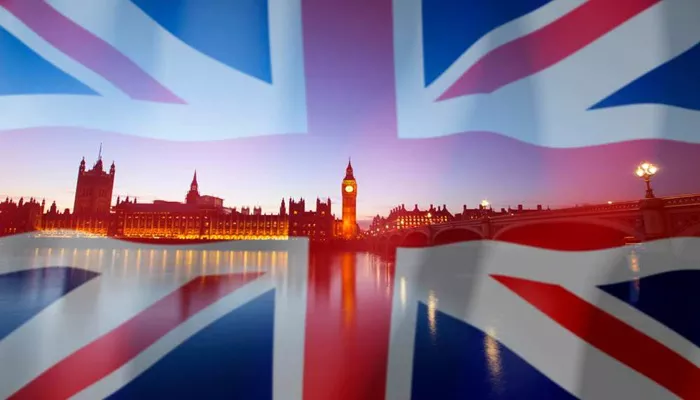Immigration has been a significant part of the UK’s history, shaping its society, culture, and economy. Understanding where most immigrants come from helps us grasp the diverse nature of the UK’s population. This article explores the origins of immigrants in the UK, providing a detailed look at the key countries and regions from which they come.
Historical Context of Immigration to the UK
The UK’s history of immigration dates back centuries. Early waves of immigrants included the Romans, Saxons, Normans, and Huguenots. However, the modern era of immigration began in earnest during the 20th century, influenced by various global events and changes in immigration policies.
Post-War Immigration
After World War II, the UK faced a shortage of labor to rebuild the country. This led to the arrival of large numbers of immigrants from the Commonwealth countries. The British Nationality Act 1948 gave citizens of Commonwealth countries the right to live and work in the UK. This period saw significant migration from countries such as India, Pakistan, Bangladesh, and the Caribbean.
The 1960s and 1970s
During the 1960s and 1970s, immigration from former British colonies continued. The influx of immigrants during this time was driven by economic opportunities and political instability in their home countries. The Immigration Act 1971 aimed to control the flow of immigrants by introducing more stringent regulations.
Recent Trends
In recent decades, the UK’s immigration patterns have shifted. The accession of Eastern European countries to the European Union (EU) in 2004 led to increased migration from these regions. Additionally, conflicts, economic hardship, and climate change have influenced migration patterns globally.
Current Major Sources of Immigration
Today, immigrants in the UK come from a wide range of countries. The following sections detail the major sources of immigration.
European Union Countries
Poland
Poland is one of the largest sources of immigrants to the UK. Polish migration increased significantly after Poland joined the EU in 2004. Polish immigrants are known for their strong work ethic and have contributed to various sectors, including construction, hospitality, and healthcare.
Romania and Bulgaria
Romania and Bulgaria joined the EU in 2007, and since then, there has been a noticeable increase in migration from these countries. Many Romanians and Bulgarians have settled in the UK to seek employment opportunities and better living standards.
India
India has been a significant source of immigrants to the UK, particularly since the mid-20th century. Indian immigrants have made substantial contributions to various fields, including medicine, technology, and business. The strong historical ties between the UK and India have facilitated this migration.
Pakistan
Pakistani migration to the UK began in the 1950s and 1960s, and it remains a significant source of immigration today. Many Pakistanis have settled in the UK, contributing to diverse sectors and establishing vibrant communities.
Bangladesh
Bangladesh is another key source of immigration to the UK. Bangladeshi migrants often come to the UK seeking better economic opportunities. They have made considerable contributions to the UK’s multicultural society.
Nigeria
Nigeria is one of the largest sources of immigrants from Africa. Nigerian migration to the UK is driven by various factors, including educational and economic opportunities. Nigerian communities in the UK are known for their strong family networks and contributions to various fields.
Somalia
Somali immigrants have been coming to the UK for several decades, driven by conflicts and instability in their home country. Somali communities in the UK are actively involved in supporting refugees and advocating for their rights.
Syria
The Syrian Civil War has led to a significant increase in asylum seekers and refugees from Syria. The UK has been part of international efforts to provide sanctuary to those fleeing conflict and persecution.
China
Chinese migration to the UK has increased in recent years, with many Chinese immigrants coming for educational opportunities and business ventures. The growing presence of Chinese students and professionals reflects the UK’s global appeal.
Regional Distribution of Immigrants
The distribution of immigrants across the UK varies. Major cities like London, Birmingham, and Manchester have large immigrant populations due to their economic opportunities and established communities.
London
London is the most diverse city in the UK, with a substantial proportion of its population being foreign-born. The city’s role as a global financial center and its vibrant cultural scene attract immigrants from around the world.
Birmingham
Birmingham, the UK’s second-largest city, has a diverse population with significant communities from South Asia, Africa, and the Middle East. The city’s industrial history and economic opportunities have made it a popular destination for immigrants.
Manchester
Manchester is another city with a notable immigrant population. It has attracted individuals from a variety of countries due to its economic opportunities and vibrant cultural scene.
see also: How Can an Immigrant Get a Job in the UK?
Impact of Immigration on the UK
Economic Contributions
Immigrants play a crucial role in the UK’s economy. They contribute to various sectors, including healthcare, education, and hospitality. Many immigrants bring valuable skills and fill essential roles that support the country’s economic growth.
Cultural Enrichment
Immigration has enriched the UK’s cultural landscape. Diverse communities bring their traditions, cuisines, and languages, contributing to a vibrant and multicultural society. This cultural diversity is reflected in the UK’s festivals, restaurants, and cultural events.
Challenges and Integration
While immigration brings numerous benefits, it also presents challenges. Integrating immigrants into society involves addressing issues such as language barriers, social cohesion, and access to services. Efforts to promote integration and understanding are essential for a harmonious and inclusive society.
Conclusion
Understanding where most immigrants come from in the UK provides valuable insights into the country’s demographic landscape. The UK’s immigrant population is diverse, reflecting historical ties, economic opportunities, and global migration trends. As the UK continues to evolve, the contributions and experiences of immigrants will remain a vital part of the nation’s identity and growth.


